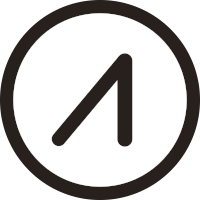Deep Dive
1. Web3-Optimized AI Infrastructure
PAAL AI’s core innovation is PaaLLM-0.5, a language model purpose-built for crypto. Unlike general AI tools, it understands decentralized systems, token economies, and Web3 culture, pulling real-time data from sources like CoinGecko and Ethereum smart contracts (PAAL AI). Its architecture includes a 1M-token context window and TPU-based deployment via Google Vertex AI, enabling high-accuracy responses for traders, developers, and DAO participants.
2. Tokenomics Aligning Incentives
The PAAL token (ERC-20) rewards holders through profit-sharing from platform revenue and buybacks. Users earn tokens by interacting with AI services, referring others, or contributing to governance decisions. Staking unlocks premium features like advanced analytics, creating a circular economy where activity boosts token utility and scarcity (CoinMarketCap).
3. Ecosystem for Builders and Users
PAAL’s tools are embedded across crypto workflows:
- MyPaal: Personalized AI assistant for research and portfolio tracking.
- APIs: Developers integrate PaaLLM-0.5 into dApps or trading bots.
- Partner integrations: Carbon Browser uses PAAL’s AI for community support, showcasing cross-project utility (Carbon Browser).
Conclusion
PAAL AI merges AI’s analytical power with blockchain’s incentive structures, targeting crypto-native use cases ignored by mainstream models. Its success hinges on adoption by builders—can PaaLLM-0.5 become the default AI layer for Web3, or will niche focus limit scalability?





 Most Visited
Most Visited Community Sentiment
Community Sentiment Chain Ranking
Chain Ranking Bitcoin Dominance
Bitcoin Dominance Market Cycle Indicators
Market Cycle Indicators Relative Strength Index (RSI)
Relative Strength Index (RSI) Bitcoin Treasuries
Bitcoin Treasuries BNB Treasuries
BNB Treasuries Overall NFT Stats
Overall NFT Stats Upcoming Sales
Upcoming Sales Signals
Signals Trending
Trending New
New Gainers
Gainers Meme Explorer
Meme Explorer Top Traders
Top Traders Feeds
Feeds Lives
Lives Articles
Articles Research
Research